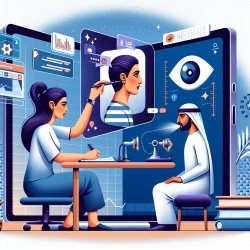Introduction
The COVID-19 pandemic has profoundly affected mental health services, particularly in school-based health centers (SBHCs). As schools closed their doors, many SBHCs had to adapt quickly to continue providing essential mental health services to students. The recent research article, "Mental Health Service Provision at School-Based Health Centers During the COVID-19 Pandemic: Qualitative Findings From a National Listening Session," offers valuable insights into the challenges and adaptations experienced by SBHCs during this time.
Key Findings from the Research
The study highlights several critical themes:
- Increased Mental Health Needs: Students presented with heightened levels of anxiety, depression, and withdrawal. The pandemic exacerbated these issues, leading to more complex mental health challenges.
- Challenges in Service Provision: SBHCs faced significant hurdles, including lack of staff, remote learning barriers, and difficulties in accessing students.
- Adaptations and Innovations: Telehealth emerged as a crucial tool for continuing services, though it brought its own set of challenges, such as privacy concerns and the digital divide.
- Supportive Factors: Strong collaborations with schools and communities were vital in sustaining mental health services.
Practical Implications for Practitioners
For practitioners in the field, these findings offer actionable insights:
- Embrace Telehealth: Despite its challenges, telehealth can provide a lifeline for students in need. Practitioners should work to address privacy concerns and ensure equitable access to technology.
- Strengthen Collaborations: Building strong partnerships with schools and communities can enhance service delivery and support sustainability.
- Innovate Service Offerings: Consider incorporating new approaches such as art and music therapy to engage students and address their mental health needs creatively.
- Focus on Equity: Ensure that mental health services are accessible to all students, particularly those from underserved communities.
Encouraging Further Research
While this study provides valuable insights, there is a need for further research to explore the long-term impacts of these adaptations and the effectiveness of innovative service offerings. Quantitative studies could help assess the broader applicability of these findings across different regions and demographics.
Conclusion
The COVID-19 pandemic has highlighted the critical role of SBHCs in providing mental health services to students. By embracing telehealth, strengthening collaborations, and innovating service offerings, practitioners can better meet the needs of students during and beyond the pandemic. For those interested in delving deeper into this research, I highly recommend reading the original research paper.
To read the original research paper, please follow this link: Mental Health Service Provision at School-Based Health Centers During the COVID-19 Pandemic: Qualitative Findings From a National Listening Session.










